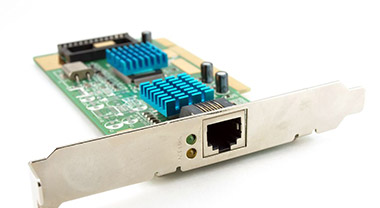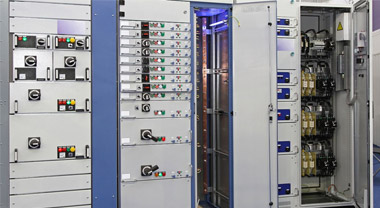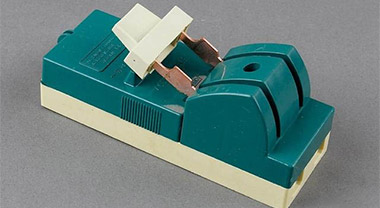Principles for choosing low-voltage circuit breakers
How to choose the circuit breaker (low voltage) correctly?
(1) The rated current of the circuit breaker is determined by the calculated current of the line;
(2) Check the breaking capacity of the low-voltage circuit breaker according to the maximum short-circuit current of the line;
(3) Check the sensitivity of the circuit breaker according to the minimum short-circuit current of the circuit, that is, the minimum short-circuit current of the circuit should not be less than 1.3 times of the short-circuit setting current of the circuit breaker;
(4) The short-circuit setting current of the circuit breaker should avoid the normal working starting current of the circuit;
(5) Check the rated short-circuit making capacity (the expected peak value of the maximum current) of the circuit breaker according to the short-circuit impulse current on the line (ie the maximum instantaneous value of the short-circuit full current), that is, the latter should be greater than the former.
The selection of low-voltage circuit breakers should be based on the specific use conditions to select the use category, select the rated operating voltage, rated current, tripping setting current and shunt, voltage and current of the undervoltage release and other parameters, refer to the protection characteristics provided in the product catalog The curve selects the protection characteristic, and needs to check the short-circuit characteristic and the sensitivity coefficient. When there is a coordination requirement with another circuit breaker or other protective appliances, a selective circuit breaker should be used.
1. Rated working voltage and rated current
The rated working voltage Ue of the low-voltage circuit breaker. And rated current Ie. It should not be lower than the normal rated working voltage and working current or calculated current of the line and equipment respectively. The rated working voltage of a circuit breaker is related to the making and breaking capacity and the use category. The same circuit breaker product can have several rated working voltages and corresponding making and breaking capacity use categories.
2. Long time delay release setting current Ir1
The long-delay release setting current Ir1 of the selected circuit breaker should be greater than or equal to the calculated load current of the line, which can be determined by 1 to 1.1 times the calculated load current; at the same time, it should not be greater than 0.8-1 times the long-term allowable current of the line conductor .
3. The setting current Ir2 of the instantaneous or short delay release
The instantaneous or short-delay release setting current Ir2 of the selected circuit breaker should be greater than the line peak current. The distribution circuit breaker can be determined according to the principle of no less than 1.35 times the peak current. When the action time of the motor protection circuit is greater than 0.02s, it can be determined according to the principle of no less than 1.35 times the starting current. If the action time is less than 0.02s, it should be increased It is not less than 1.1-2 times of the starting current. These coefficients are added in consideration of factors such as setting errors and possible changes in motor starting current.
4. Short-circuit making and breaking capacity and short-time withstand capability verification
The rated short-circuit breaking capacity and rated short-circuit making capacity of the low-voltage circuit breaker should not be lower than the expected short-circuit current at its installation location. When the action time is longer than 0.02s, the non-periodic component of the short-circuit current can be ignored, that is, the effective value of the short-circuit current periodic component is taken as the maximum short-circuit current; when the action time is less than 0.02s, the non-periodic component should be considered, that is, the short-circuit current is the first The full current in the cycle is regarded as the maximum short-circuit current. If the verification result shows that the breaking capacity of the circuit breaker is insufficient, the following measures should be taken:
a) Add other protective appliances (such as fuses) on the power supply side of the circuit breaker as backup protection.
b) With current-limiting circuit breakers, the corresponding products can be selected according to the let-through current characteristics or current-limiting coefficients provided by the manufacturer (that is, the ratio of the actual breaking current peak value and the expected short-circuit current peak value).
c) A larger capacity circuit breaker can be selected. Various short-circuit protection circuit breakers must be able to carry unrestricted short-circuit current transient values in the closed position, and must also be able to carry short-circuit current within the specified time delay range. The short-circuit current value carried by this short-term load should not exceed the rated short-time withstand capability of the circuit breaker, otherwise measures should be taken or the circuit breaker specifications should be changed. The circuit breaker product catalog generally gives the product's rated peak withstand current and rated short-time withstand current (1s current). When it is an alternating current, the short-term withstand current should be based on the effective value of the unrestricted short-circuit current periodic component.
5. Sensitivity coefficient calibration
The selected circuit breaker should also be checked for sensitivity coefficient according to short-circuit current. The sensitivity factor is the ratio of the minimum short-circuit current in the line (usually taken as the two-phase or single-phase short-circuit current at the motor terminal or the end of the distribution line) and the instantaneous or delayed release setting current of the circuit breaker. The sensitivity factor for two-phase short circuit should not be less than 2. The sensitivity factor for single-phase short circuit may be 1.5 for DZ type circuit breakers and 2 for other types of circuit breakers. If the sensitivity coefficient cannot meet the above requirements after verification, in addition to adjusting the setting current, a time delay release can also be used as a backup protection.
6. Parameter determination of shunt and undervoltage release
The rated voltage of the shunt and undervoltage releases should be equal to the rated voltage of the circuit, and the power source category (AC, DC) should be determined according to the control circuit conditions. The rated control power supply voltage series specified by the national standard are DC (24), (48), 110, 125, 220, 250V; AC (24), (36), (48), 110, 127, 220V, the data in brackets are not Recommended.




